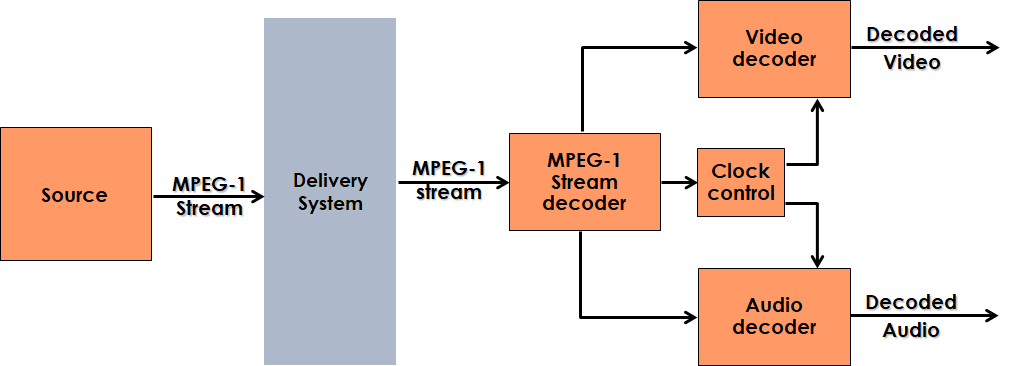The goal of MPEG-1 was to leverage the manufacturing power of the Consumer Electronics (CE) industry to develop the basic audio and video compression technology for an application that was considered particularly attractive when MPEG was established (1988), namely interactive audio and video on CD-ROM. This was the logic of the telco industry who thought that their future would be “real time audio-visual communication” but did not have a friendly industry to ask to develop the terminal equipment.
The bitrate of 1.5 Mbit/s mentioned in the official title of MPEG-1 Coding of moving pictures and associated audio at up to about 1,5 Mbit/s was an excellent common point for the telecom industry with their ADSL technology whose first generation targeted that bitrate and for the CE industry whose Compact Disc had a throughput of 1.44 Mbit/s (1.2 for the CD-ROM). With that bitrate, compression technology of the late 1980’s could only deal with a rather low, but still acceptable resolution (1/2 the horizontal and 1/2 the vertical resolution obtained by subsampling every other field, so that the input video is progressive), Considering that audio had to be impeccable (that is what humans want), at least 200 kbit/s had to be assigned to audio.
Figure 51 depicts the model of an MPEG-1 decoder
Figure 51 – Model of the MPEG-1 standard
The structure adopted for MPEG-1 set the pattern for most MPEG standards:
- Part 1 – Systems specifies how to combine one or more audio and video data streams with timing information to form a single stream (link)
- Part 2 – Video specifies the video coding algorithm applied to so-called SIF video of ¼ the standard definition TV (link)
- Part 3 – Audio specifies the audio compression. Audio is stereo and can be compressed with 3 different performance “layers”: layer 1 is for an entry level digital audio, layer 2 for digital broadcasting and layer 3, aka MP3, for digital music. The MPEG-1 Audio layers were the predecessors of MPEG-2 profiles (and of most subsequent MPEG standards) (link)
- Part 4 – Compliance testing (link)
- Part 5 – Software simulation (link).
| Table of contents | ◄ | 13 The MPEG standards | █ | 13.2 MPEG-2 | ► |
